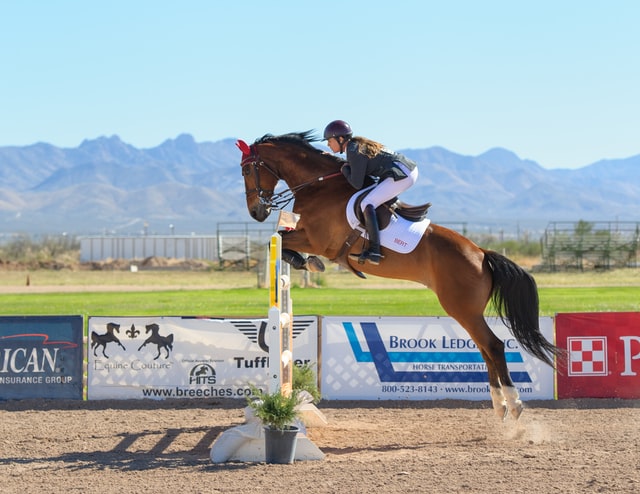
It’s important to know what jumps to use when you start training a horse or when you’re preparing a horse for a competition. Jumps are beneficial as they can improve your horse’s development. You can reduce unpredictability when working with a young horse and increase difficulty when training an experienced horse. Find out which jumps can help you get your horse show ready.
1. Start Small With Ground Poles
If you’re working with an inexperienced horse, it’s best to start small with ground poles. These poles are low to the ground and can be set up so you can lead your horse over them for the first time. Ground poles are perfect for an apprehensive jumping horse. Over time, you can put additional poles around the course to improve on the horse’s flatwork. Horses that are new to jumping may need to work with only ground poles for one or two weeks. Starting with flatwork is ideal if you eventually want your horse to be able to use a striped color horse jump.
2. Step It Up With Trotting Poles
Once your horse feels comfortable with a single pole, add a few trotting poles to the course. They should be about five feet apart, but be sure to take into account your horse’s size because spacing may need to be adjusted based on gait. Some horses may be hesitant at first, but most are able to figure it out by the second time around. Like the ground poles, you can add more trotting poles as your horse becomes more experienced with the course.
3. Go to the Next Level With Cross-Rail Jumps
If your horse has mastered ground and trotting poles, it may be time to move on to cross-rail jumps. An inexperienced horse may be apprehensive when first approaching a cross-rail jump. If that’s the case, allow the horse to walk up to the jump and examine it. Then, ask it to walk over the jump. On the other hand, striped jump rails can add a new level of difficulty for more experienced jumping horses. The added challenge could benefit how the horse approaches and executes the jump.
4. Get Detailed With Gymnastic Grids
Increasing difficulty on the training course is important if you want your horse to be a contender. Using gymnastic grids can help your horse really think about each jump instead of rushing to clear them. Simply put, a gymnastic grid is made up of two cross-rails that are placed approximately 10 feet apart. Adding this exercise to the course could improve the horse’s performance for the duration of his career.
Using the best horse jumps to train a jumping horse is important because they can not only prevent injury to the horse and the rider but can also help make the horse a winner. Try out these tips for training to see the difference.